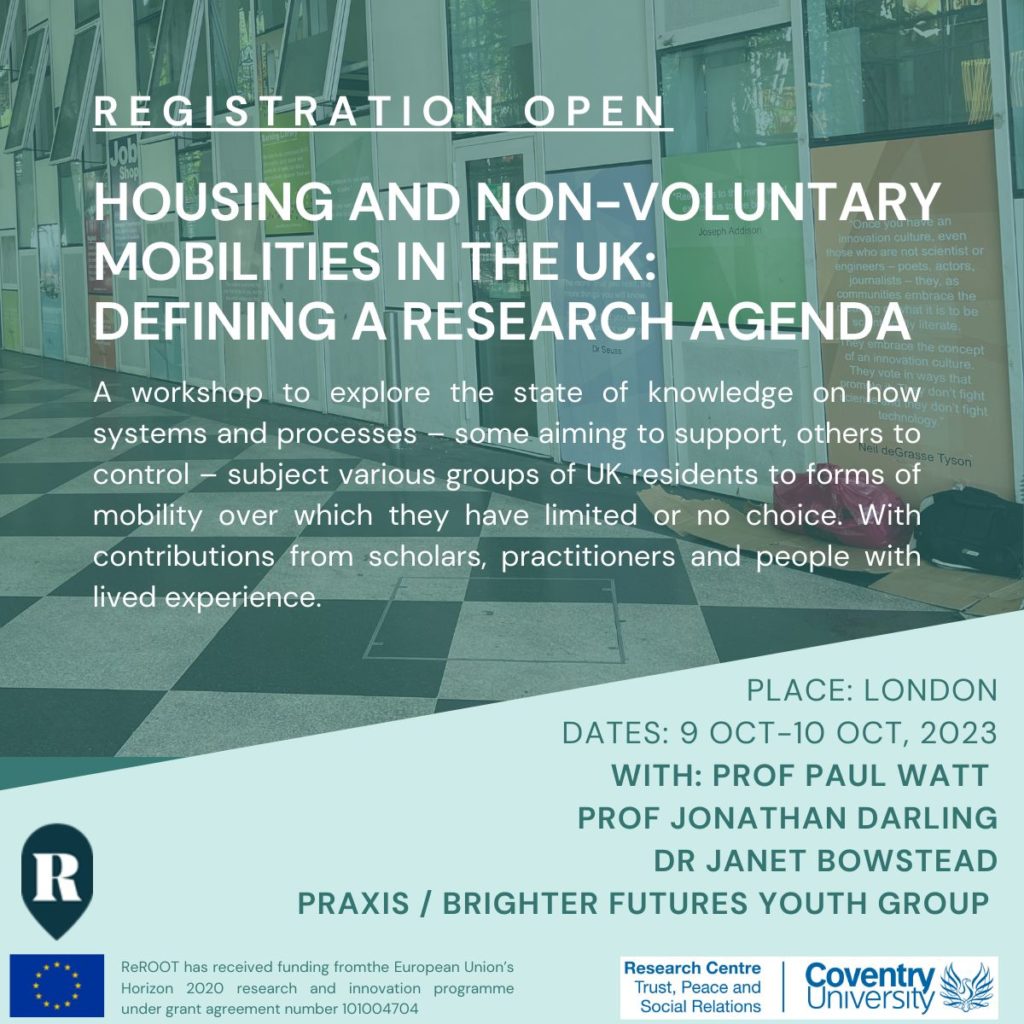Within the UK, many people find themselves forced to relocate, whether due to housing evictions, dispersal of asylum seekers, clearance of housing estates for regeneration projects, or homelessness policies and practice. These non-voluntary mobilities affect individuals differently, but are structurally imposed.
The forced relocation of women and children due to domestic abuse may be seen as somewhat different – with the journeys initially forced by the abusive perpetrator. However, even at that point, there is the question of why the state isn’t holding him accountable – controlling his abuse so that women and children do not have to uproot themselves and relocate…
And, often, after that initial relocation, the domestic abuse journeys are further forced by state policies, availability (or not) of support services, and the implications of crossing administrative boundaries. So the journeys, in their multiple stages over time and place, are often structurally imposed in many ways.
With other non-voluntary mobilities, the flow of forced journeys may be in one direction: forcing people out of areas that are being ‘gentrified’, forcing asylum seekers out of major cities, or out of residential areas. And the focus of those who want to support such displaced persons is therefore on welcoming new arrivals, with the authorities focusing on the ‘arrival infrastructure’ including civil society and social professionals. The ReROOT Project is currently working across a range of locations in Europe, to improve practices, policies and imaginaries of arrival infrastructures; and a workshop in London on 9-10 October will explore the context and responses in the UK.

Thinking about arrival infrastructures, the forced internal displacement due to domestic abuse has parallels – all the difficulties of starting again with your life in a new, unknown, unchosen place. Individuals’ experiences may be similar, in terms of the effects and needs, but there is also a key difference in the aggregate effect in each place. For, at the same time as that arrival, there is also likely to be a departure – another woman, often with children, fleeing domestic violence. They won’t be aware of each other – their journeys will often be secret and hidden to escape the abuser – but domestic abuse occurs in all places; and journeys are from everywhere to everywhere.
Administrative data from services, analysed in this research, shows this spatial churn – that most local authorities experience around the same number of domestic violence departures as arrivals. But the lack of net effect is made up of a mass of journeys and disruption for individuals. So, a rights-based response to the disruption and harms of forced relocation, as well as the harms from the abuse, would create an infrastructure for both arrivals and departures – a coherent infrastructure so that women and children can go as far as they need and stay as near as they can.
